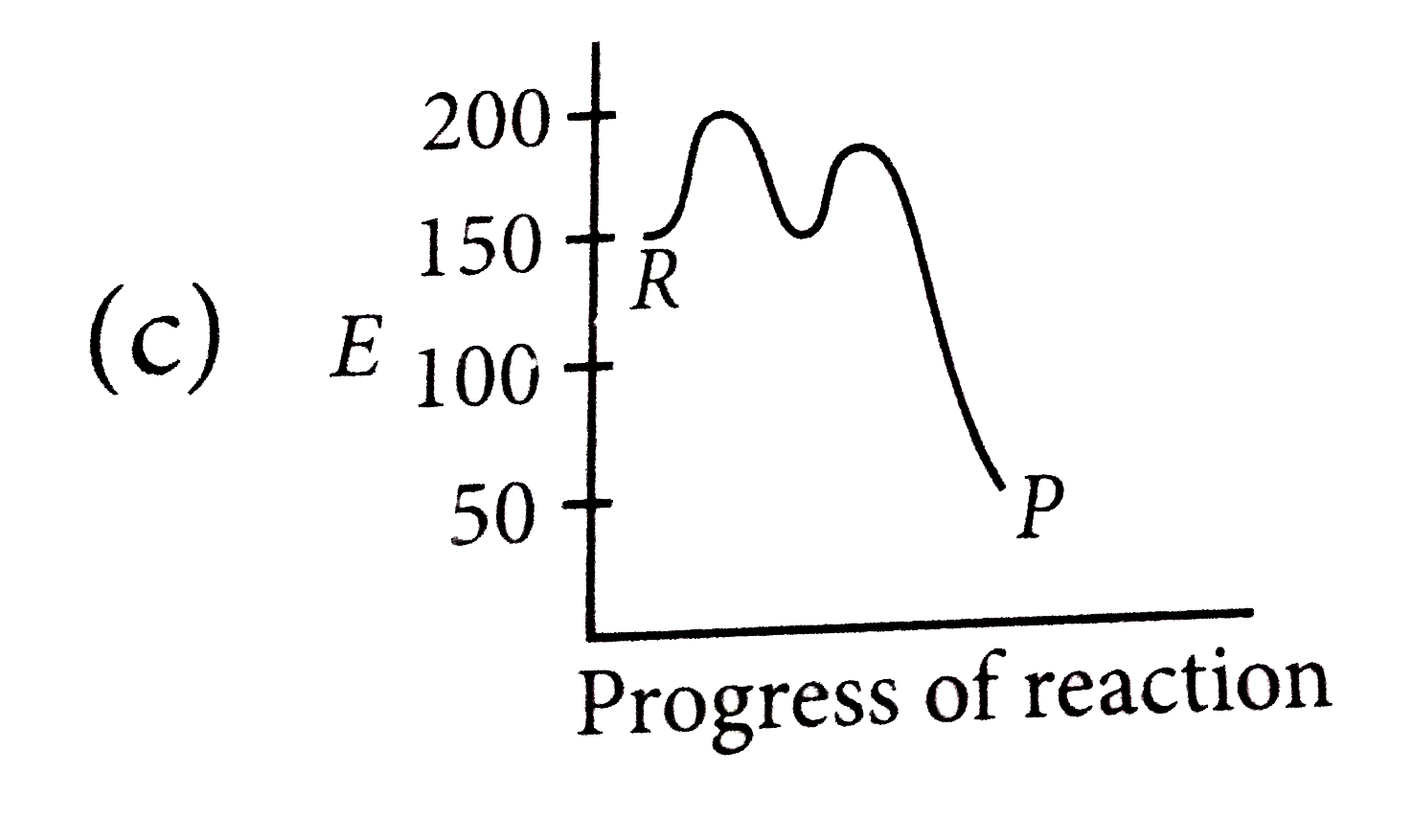The activation energy of exothermic reaction A→B is 80 kJ mol−1 . The heat of reaction is 200kJmol−1. The activation energy for the reactionB→a ( in kJ/mol) will be :
80
120
40
280
The correct Answer is:D
To find the activation energy for the reverse reaction B→A, we can use the relationship between the activation energies of the forward and reverse reactions and the heat of reaction.
1. Understand the Given Information:
- Activation energy for the forward reaction A→B (denoted as EA→B) = 80 kJ/mol.
- Heat of reaction (denoted as ΔH) = -200 kJ/mol (since it is an exothermic reaction, we take it as negative).
2. Use the Relationship Between Activation Energies:
The relationship between the activation energies of the forward and reverse reactions is given by:
ΔH=EA→B−EB→A
where EB→A is the activation energy for the reverse reaction.
3. Substitute the Known Values:
Plugging in the values we have:
−200=80−EB→A
4. Rearrange the Equation:
To find EB→A, rearrange the equation:
EB→A=80+200
5. Calculate the Activation Energy for the Reverse Reaction:
EB→A=280 kJ/mol
Final Answer:
The activation energy for the reaction B→A is 280 kJ/mol.
---
- Activation energy for the forward reaction A→B (denoted as EA→B) = 80 kJ/mol.
- Heat of reaction (denoted as ΔH) = -200 kJ/mol (since it is an exothermic reaction, we take it as negative).
The relationship between the activation energies of the forward and reverse reactions is given by:
ΔH=EA→B−EB→A
where EB→A is the activation energy for the reverse reaction.
Plugging in the values we have:
−200=80−EB→A
To find EB→A, rearrange the equation:
EB→A=80+200
EB→A=280 kJ/mol
The activation energy for the reaction B→A is 280 kJ/mol.
Topper's Solved these Questions
- CHEMICAL KINETICS BOOK - VMC MODULES ENGLISHCHAPTER - CHEMICAL KINETICS EXERCISE - Level-2 ( Numerical Value Type for JEE Main )
15 Videos
- CHEMICAL KINETICS BOOK - VMC MODULES ENGLISHCHAPTER - CHEMICAL KINETICS EXERCISE - JEE Main (Archive)
56 Videos
- CHEMICAL KINETICS BOOK - VMC MODULES ENGLISHCHAPTER - CHEMICAL KINETICS EXERCISE - Level-1
75 Videos
- CHEMICAL EQUILIBRIUMBOOK - VMC MODULES ENGLISHCHAPTER - CHEMICAL EQUILIBRIUMEXERCISE - IN-CHAPTER EXERCISE - G
10 Videos
- CHEMICAL THERMODYNAMICS BOOK - VMC MODULES ENGLISHCHAPTER - CHEMICAL THERMODYNAMICS EXERCISE - IN - CHAPTER EXERCISE - L
10 Videos
Similar Questions
The activation energy for the forward reaction X→Y is 60kJmol−1 and ΔH is −20kJmol−1. The activation energy for the reverse reaction is
View SolutionFor an exothermic reaction A→B, the activation energy is 65kJmol−1 and enthalpy of reaction is 42kJmol−1. The activation energy for the reaction B→A will be:
View Solution
Knowledge Check
An exothermic chemical reaction proceeds by two stages reactants Stage I−−−→intermdediateStage II−−−→ products, The activation energy of stage I is 50kJmol−1. The overall enthalpy change of the reaction is −100kJ mol−1. Which diagram could represent the energy level diagram for the reaction ?
A B
B C
C D
D
An exothermic reaction X→Y has an activation energy of 90kJmol−1 of X and the heat of reaction is 250kJ. Find the activation energy of the reaction Y→X.
View SolutionIn an exothermic reaction X→Y, the activation energy is 100kJmol−1 of X. The enthalphy of the reaction is −140kJmol−1. The activation energy of the reverse reaction Y→X is

View SolutionAn exothermic reaction A→B has an activation energy of 17kJ per mole of A. The heat of the reaction is 40kJ. Calculate the activation energy for the reverse reaction B→A.
View SolutionAn exothermic reaction, A→B, has an activation energy of 15 kcal mol−1 and the energy of reaction is 5 kcal mol−1. The activation energy in kcal mol−1 for the reaction, B→A is
View SolutionA colliison between reactant molecules must occur with a certain minimum energy before it is effective in yielding Product molecules. This minimum energy is called activation energy Ea Large the value of activation energy, smaller the value of rate constant k. Larger is the value of activation energy, greater is the effect of temperature rise on rate constant k.

Ef= Activation energy of forward reaction
Eb= Activation energy of backward reaction
ΔH=Ef−Eb
Ef= threshold energy
If a reaction A+B→C is exothermic to the extent 30kJmol−1 and the forward reaction has an activation energy of 249kJmol−1 the activation energy for reverse reaction in kJmol−1 is
View SolutionIf a reaction A+B→C is exothermic to the extent of 30KJmol−1, the the forward reaction has an activation energy , 70KJmol−1, the activation energy for the reverse reaction is
View SolutionThe activation energy for most of the reaction is approximately 50kJmol−1. The rate for temperature coefficient for such reaction will be
View Solution
